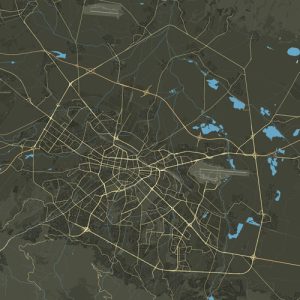Everyone who has come to the area of the Trigrad Gorge has left convinced that it is one of the natural wonders not only of Bulgaria, but also of the world. The most suitable starting point for visiting the karst sites around it is a hut “Trigrad Rocks”.
The majestic and impressive with its beauty gorge is located along the river Trigradska, 2 km below the village of Trigrad, on the road to Devin. The actual part of the gorge extends for 2-3 km along the river, as from marble rocks rise on both sides, forming the narrow gorge, also called the Tunnel. The height of the rocks in places reaches up to 250 m.
The lowest part is the Bukov Most area (946.5 m above sea level), and the highest is at Kulata peak (1543 m a.s.l.). The Trigrad Gorge natural landmark was declared a protected area in 1963. On the eastern side of the gorge’s rocky rim are the caves Haramiyska, Prokhodna, etc. With the greatest merits for the discovery and popularization not only of the huge underground chasm called “The Devil’s Throat”, but also of the majority of the caves in the region, was the late teacher Dimitar Raichev, who educated more than one generation of speleologists.
There are over 150 caves in the Trigrad Gorge area, some of which also served as prehistoric dwellings for people. The caves have helped to preserve the fauna, including bats – 20 species out of a total of 30 for Europe are found in Bulgaria. The bed of the Trigrad river has dug deep into the mountain bowels, composed mainly of marble and metamorphic rocks.
This has made it possible to form various karst forms, and in the deeper layers to form huge caves. There are many unknown and unexplored caves in the area. Here you can see carts, whirlpools, sinkholes, sluices and rock bridges. In these places there are rare species of plants and animals.
For example, Rhodope silivryak (Haberleia rhodopensis), Rhodope rye and others, and from the animal world, the only poisonous spiders in Bulgaria, living deep in the caves, can be found here.
At the end of the gorge, in the direction of the village of Trigrad, on the lower side of the road is an artificially excavated entrance to the Devil’s Throat cave. A hundred and fifty meter long tunnel leads to the impressive hall of the cave. At the beginning, only the slight chill suggests that one is entering the ground and above it lies a 200-meter layer of marble.
Then there’s a dull hum that turns into a rumble, and soon we’re in the Great Hall. At first it is difficult to perceive its outlines and dimensions. Slowly the details emerge – the bluish-dark glints of the tamed river and an ethereal mist that creates the illusion of movement and life, as if the Devil is “breathing”. From the hall, up a winding steep cement staircase, the natural entrance of the cave is reached. The Thracians have a legend that they threw chieftains here in order to remain immortal. The waters of Trigradska Reka form 18 waterfalls in it, the highest of which descends into the roaring hall of the cave from 42 m height. It is the highest on the Balkan Peninsula.
The huge Rumbling Hall (with three waterfalls) into which the boiling river flows is over 35 m high and over 100 m wide. The name of the cave comes from the shape of the entrance, resembling a devil’s head . Almost 400 m from the entrance to the Devil’s Throat, the waters of the underground river are lost in a siphon-gallery. The length of the siphon is more than 150 m, and after it, along a 60-meter gallery, the underground river leaves the cave and comes to the surface again. In this cave, the largest colony of long-winged cave bat in Bulgaria and in the Balkans hibernates.
Contacts:
“Trigradski Skali” hut: 0888 061 840; 0896 715 174; 0896 688 360
TD “Trigradski skali”: 0888 061840; 0896 715175; 0879 170 808

